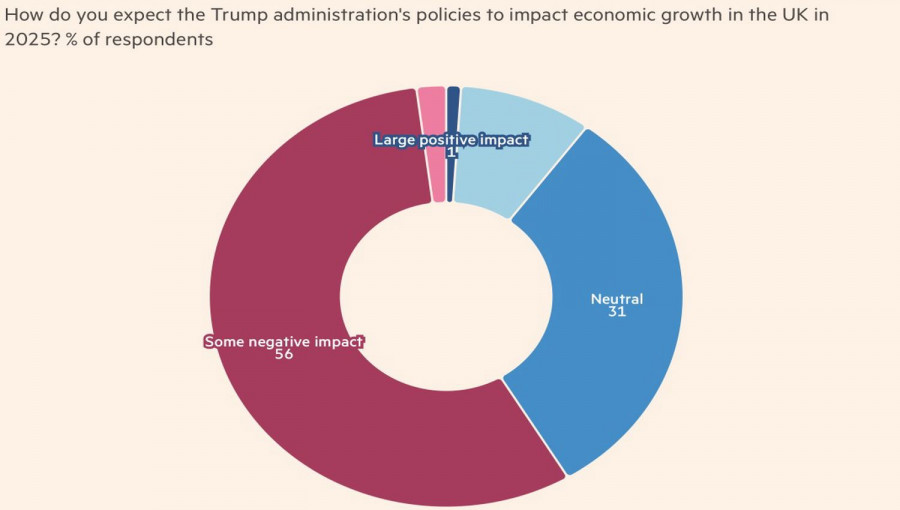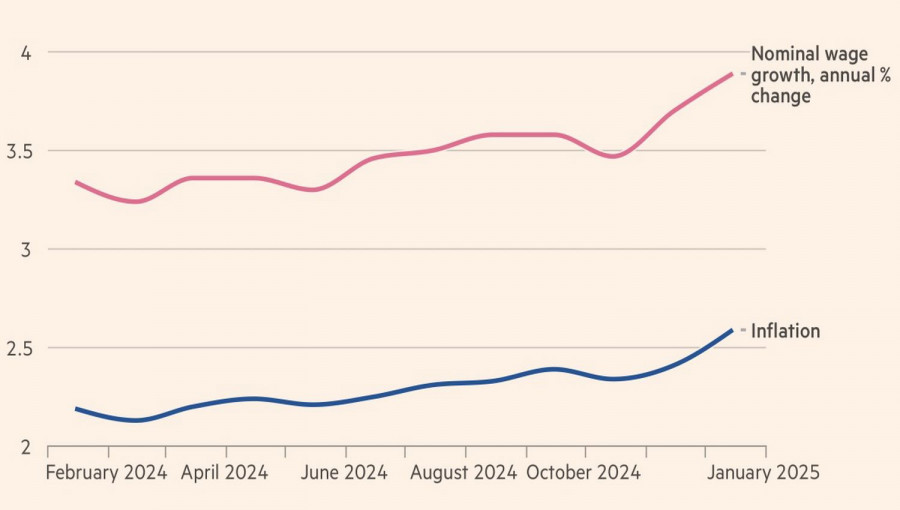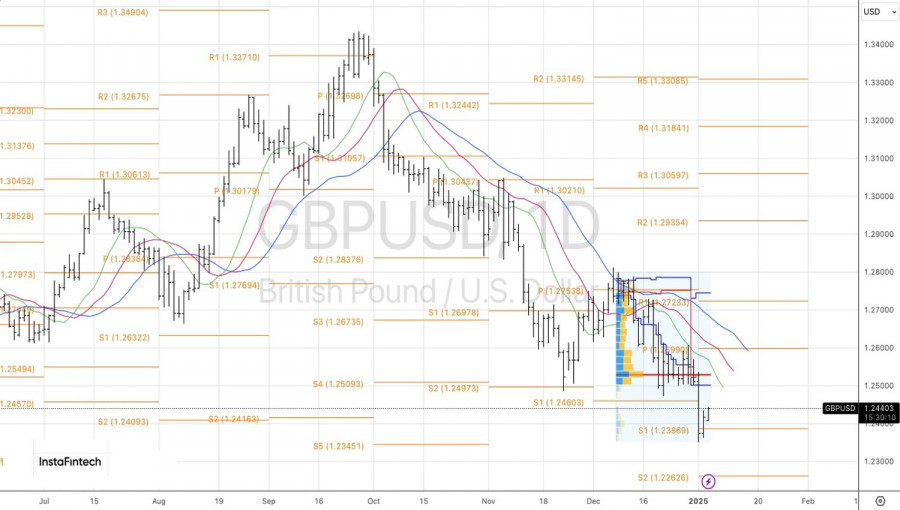See also


 06.01.2025 09:16 AM
06.01.2025 09:16 AMPolitical stability and the reduced impact of Donald Trump's trade tariffs are expected to enable the UK economy to perform better than its European counterparts, particularly Germany and France. This insight is based on a survey of 100 experts conducted by the Financial Times. However, challenges such as high labor costs, declining tax revenues, and the rapid depletion of fiscal stimulus from Rachel Reeves will continue to impede the UK's GDP growth compared to the US, contributing to a bearish trend for GBP/USD.
The UK's economy, which is predominantly service-oriented and has a smaller trade surplus with the US compared to the eurozone, is regarded as less vulnerable to Trump's trade tariffs than the economies of the eurozone, according to the survey respondents.
Impact of the New US President's Policies on the UK's GDP
However, the UK's tighter labor market compared to the US—where the outflow of cheap labor followed Brexit—fuels wage growth and inflation. Consequently, the futures market anticipates the Bank of England will cut the repo rate by only 59 basis points in 2025. This is significantly less than the 108 basis points projected for the European Central Bank and slightly more conservative than the 43 basis points forecast for the Federal Reserve. These varying rates of monetary easing suggest a continued decline in both GBP/USD and EUR/GBP.
According to the British Chambers of Commerce, 55% of over 5,000 UK companies plan to raise prices in the next three months, up from 39% in the third quarter. Accelerating inflation amid slowing economic growth creates a pronounced stagflationary environment, which, after a strong GDP start in the first half of the year, sent GBP/USD tumbling off a cliff in September 2024.
Trends in Inflation and Wages in the UK
The pair's decline to a seven-month low is also driven by rising gas prices in Europe due to the halt of Russian gas transit through Ukraine and colder-than-expected weather in the region. Storage levels are depleting at the fastest pace since the energy crisis of 2022, and the fact that the UK is a net importer of energy products puts additional downward pressure on the pound.
Due to high interest rates, the pound is currently viewed as a risk asset. The absence of a Santa Claus rally at the end of 2024 and the beginning of 2025 limits the chances for GBP/USD bulls to make a strong comeback. However, buyers are slowly recovering from the shock of the recent terrorist attacks in New Orleans and Las Vegas. Additionally, some bearish investors are taking profits ahead of the key US labor market data for December.
From a technical perspective, the daily chart for GBP/USD shows an inside bar pattern, indicating a potential pullback. Nonetheless, the downtrend remains intact. Therefore, any rebound from resistance levels at 1.246, 1.25, and 1.253 should be considered as selling opportunities.
You have already liked this post today
*The market analysis posted here is meant to increase your awareness, but not to give instructions to make a trade.



